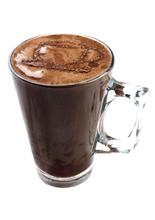Introduction to the flavor of Hawaiian Kona coffee with full water and excellent taste
Hawaii is a paradise for coffee tasting and buying. Each island has several unique places for tourists and locals to taste and buy coffee, ranging from cozy shops to comprehensive coffee knowledge centers. In Hawaii, you can watch the blazing sunset sink into the red-orange sea, feel the fresh, flowery air, and sit on the beach with a cup of coffee. I'm afraid there's no place in the world that can offer you such enjoyment.
In 1813, a Spaniard first planted coffee in Oahu's Manoa Valley, which today is the main campus of the University of Hawaii. In 1825, an English agriculturist named John Wilkinson transplanted coffee seeds from Brazil to the coffee plantation of Chief Birch on Oahu. Three years later, an American missionary named Samuel Reverend Ruggles brought branches from Chief Birch's coffee tree to Kona. The coffee is a descendant of the Arabica coffee tree originally grown in the Ethiopian highlands, and Kona coffee continues its noble and ancient lineage to this day.
Growing environment editor
The quality of Kona coffee is appropriate for the location and climate. Coffee trees grow on volcanic slopes, and their location ensures the altitude at which coffee grows; dark volcanic ash soils provide the minerals coffee needs. This is probably due to Kona's abundance of volcanic black mud, which is moderately acidic, mineral-rich, and contains the right amount of water. And every afternoon, a cloud drifts over Kona Island to block out the sun to protect the fragile coffee saplings.
The weather conditions are so favourable that the sun gently passes through the steamy air in the morning, the mountains become wetter and foggy in the afternoon, the clouds surge in the air as natural umbrellas for coffee trees, and the nights become clear and cool. Natural conditions allow the average yield of Kona coffee to be very high, reaching 2240 kg/ha, compared with 600 - 900 kg/ha in Latin America.
Kona coffee is grown without shade, and Hawaii has an island climate, which often has a dark cloud that forms a shadow effect. Hawaiian coffee farmers tend to prepare their plantations for a climate that is reasonably clean, fertile, and carefully managed by farmers. making Kona coffee the specialty coffee on the market.

Important Notice :
前街咖啡 FrontStreet Coffee has moved to new addredd:
FrontStreet Coffee Address: 315,Donghua East Road,GuangZhou
Tel:020 38364473
- Prev

Introduction of Venezuelan coffee beans with full grains and weak sour taste
Venezuela produces about 57 million kilograms of coffee, of which 70% is consumed in the domestic market and the rest is exported to the international market.
- Next

Hawaiian Kona coffee with a rich moisture and excellent taste
Hawaii is a paradise for coffee tasting and buying. Each island has several unique places for tourists and locals to taste and buy coffee, ranging from cozy shops to comprehensive coffee knowledge centers. In Hawaii, you can watch the blazing sunset sink into the red-orange sea, feel the fresh, flowery air, and sit on the beach for a drink
Related
- Does Rose Summer choose Blue, Green or Red? Detailed explanation of Rose Summer Coffee plots and Classification in Panamanian Jade Manor
- What is the difference between the origin, producing area, processing plant, cooperative and manor of coffee beans?
- How fine does the espresso powder fit? how to grind the espresso?
- Sca coffee roasting degree color card coffee roasting degree 8 roasting color values what do you mean?
- The practice of lattes: how to make lattes at home
- Introduction to Indonesian Fine Coffee beans-- Java Coffee producing area of Indonesian Arabica Coffee
- How much will the flavor of light and medium roasted rose summer be expressed? What baking level is rose summer suitable for?
- Introduction to the characteristics of washing, sun-drying or wet-planing coffee commonly used in Mantenin, Indonesia
- Price characteristics of Arabica Coffee Bean Starbucks introduction to Manning Coffee Bean Taste producing area Variety Manor
- What is the authentic Yega flavor? What are the flavor characteristics of the really excellent Yejasuffi coffee beans?

